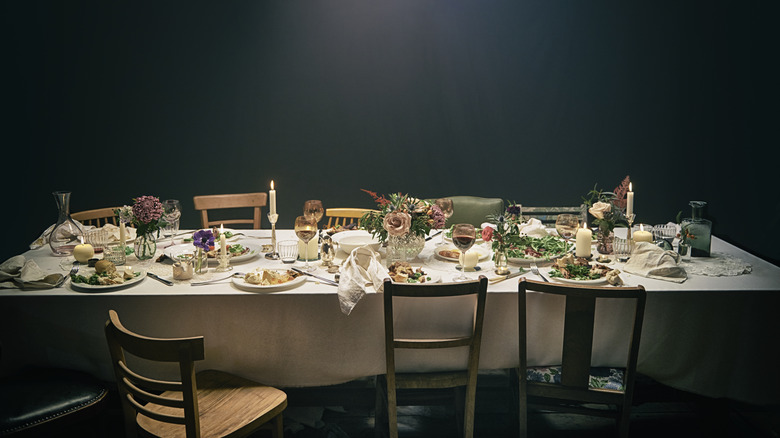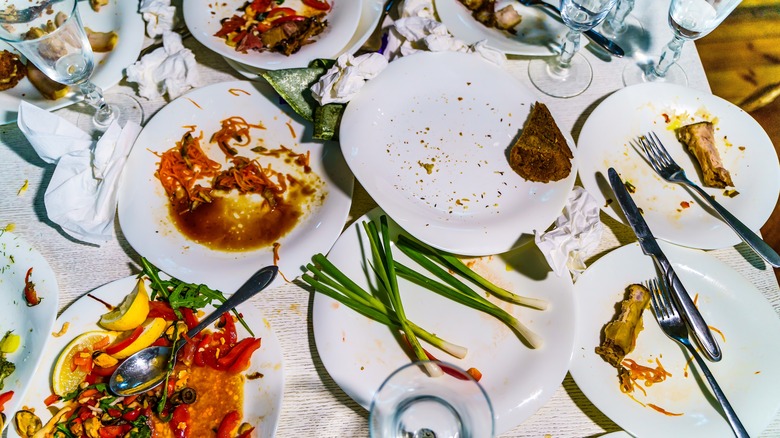What It Really Means When Restaurants Place Glass Over White Tablecloths
Born from a thunderbolt and often credited for catapulting the West into the scientific revolution, glass is a perfect paradox. Representing power and fragility, clarity and chaos, the prosaic and the mundane — when glass materializes in life, it's worth taking a beat to contemplate what it means. So when restaurants place glass over white tablecloths, should we be clamoring over each other to snag a booking? As it turns out, probably not.
You only have to sip wine from the wrong glass to know it has the power to shape our experiences. (Yes, the shape of your wine glass really does matter and it's absolutely worth brushing up on types of cocktail glasses to ensure you get the most out of every mouthful).
In ancient Egypt, colored glass was a status symbol used by pharaohs to flaunt their wealth, ergo a glass-topped restaurant table could be one you ought to eat at, or, perhaps even more importantly, to be seen eating at. Glass enjoyed a similarly powerful status in medieval Europe where stained glass windows played a pivotal role in spreading Christianity, conveying biblical stories through pictures for churchgoers with low literacy. That sort of dynamic clarity topping your dinner table would surely act as a form of energetic dopamine dressing, repelling tiresome small talk and instead setting the scene for transparent, authentic, and meaningful conversations among diners.
For now we see through a glass, darkly
It isn't a stretch to consider that glass, especially when combined with linen, might only enhance the desirability of a restaurant table. The reality, however, is far less glamorous — the only thing glass toppers reflect is a restaurant's laundry budget. Specifically, the lack thereof.
The sustainability bonus of glass-topped linen is as clear as, well, glass. Such a covering will spare the tablecloth when spaghetti sauce goes flying or a clumsy guest upends a wine bottle. All such sins can be quickly remedied with a deft swipe of a cloth before the next booking arrives to take their seats. Less linen and less laundry is only a good thing ... until it isn't. The TRSA states that tablecloths can make a surface five times cleaner than a bare, regularly-cleaned restaurant table, proving that a tablecloth really matters when dining – provided it's new with each sitting. Who hasn't stealthily wiped their hands on the tablecloth draping? (It's a giant napkin, after all).
Those attuned to Feng Shui know that glass is thought to create "feelings of uneasiness and sensitivity," which isn't the sort of energy that's likely to lead to an enjoyable dining experience (or digestion). So next time you're contemplating where to head for a feed, don't let the gleam from a glass-topped table blind you. Unless the linen's being changed between customers, it'll be a safer bet to take your hungry belly elsewhere.

